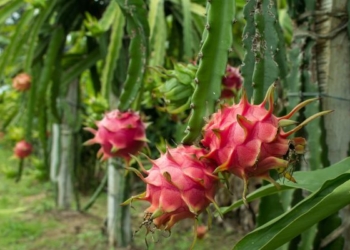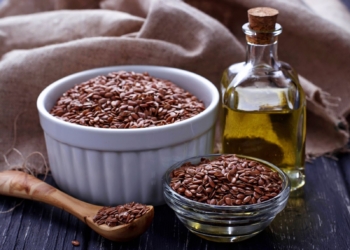In recent years, a new type of establishment has been quietly revolutionizing the social drinking scene in the United States. Kava bars, offering a unique and tranquil alternative to traditional bars, are rapidly gaining popularity. These venues serve kava, a plant-based beverage known for its relaxing effects, creating a distinctive social experience that emphasizes calmness, connection, and well-being. This article delves into the rise of kava bars, exploring how they are redefining social drinking and offering a healthier, more mindful alternative to the conventional bar culture.
The Origins of Kava
Kava, also known as kava-kava, is a root traditionally consumed in the South Pacific islands for its calming and sedative properties. For centuries, it has been used in cultural and social ceremonies, promoting relaxation, stress relief, and community bonding. The kava plant, Piper methysticum, contains active compounds called kavalactones, which are responsible for its soothing effects.
Traditionally, kava is prepared by grinding the root and mixing it with water, creating a muddy-looking drink. While the taste might be an acquired one—often described as earthy or slightly bitter—the effects are immediate and profound. Consumers typically experience a sense of calm, mental clarity, and sociability without the hangover or health risks associated with alcohol.
The Emergence of Kava Bars in the US
The first kava bars in the United States appeared in the early 2000s, primarily in states like Florida and California. These pioneering establishments aimed to introduce the American public to the benefits of kava in a social setting. Over the years, the concept has spread across the country, with kava bars now thriving in many major cities and towns.
The appeal of kava bars lies in their relaxed and welcoming atmosphere. Unlike traditional bars, where the primary focus is on alcohol consumption, kava bars prioritize relaxation and social connection. The ambiance in a kava bar is often serene, with comfortable seating, soft lighting, and soothing music, creating an environment conducive to conversation and relaxation.
A Healthier Alternative to Alcohol
One of the key reasons for the growing popularity of kava bars is the increasing awareness of the health risks associated with alcohol consumption. Many people are seeking alternatives that offer social engagement without the negative side effects of alcohol. Kava provides a compelling solution. Its calming effects help reduce stress and anxiety, and it promotes a sense of well-being without impairing judgment or motor skills.
Moreover, kava is non-addictive and has a lower risk of abuse compared to alcohol. While excessive kava consumption can lead to mild side effects like temporary gastrointestinal discomfort or skin dryness, these are generally rare and less severe than the consequences of heavy alcohol use. For health-conscious individuals, kava bars offer a way to enjoy social drinking in a safer and more mindful manner.
The Social Dynamics of Kava Bars
Kava bars foster a unique social dynamic that sets them apart from traditional bars. The atmosphere is typically more inclusive and less competitive, with patrons engaging in meaningful conversations rather than the rowdiness often associated with alcohol-fueled environments. Regulars at kava bars frequently describe a sense of community and belonging, as the shared experience of consuming kava creates a bond among patrons.
Many kava bars also host events such as open mic nights, live music performances, and educational workshops, further enhancing the sense of community. These events provide opportunities for patrons to connect over common interests and build relationships, making kava bars more than just places to drink—they become hubs of social activity and cultural exchange.
The Role of Kava Bars in Mental Health and Wellness
The wellness movement has gained significant momentum in recent years, with people increasingly prioritizing mental and emotional health. Kava bars fit seamlessly into this trend, offering a space where individuals can unwind and de-stress. The calming effects of kava can help reduce symptoms of anxiety and depression, making it an appealing option for those seeking natural remedies for mental health issues.
In addition to serving kava, many kava bars offer other health-oriented beverages such as herbal teas, kombucha, and CBD-infused drinks. These options cater to a broad range of preferences and dietary needs, reinforcing the wellness-focused ethos of these establishments.
The Economic Impact of Kava Bars
The rise of kava bars has also had a positive economic impact. These businesses contribute to local economies by creating jobs and supporting small-scale farmers in the South Pacific who grow kava. The kava industry provides a sustainable source of income for these communities, promoting economic development in regions that have traditionally relied on agriculture.
Furthermore, the growth of kava bars has spurred innovation and entrepreneurship. Many kava bar owners are passionate about the plant and its benefits, driving them to create unique and inviting spaces for their patrons. This entrepreneurial spirit has led to the diversification of the beverage industry, with kava bars introducing new products and experiences that enrich the social landscape.
The Future of Kava Bars
As the popularity of kava bars continues to rise, the future looks bright for this emerging sector. Several trends indicate that kava bars will become even more mainstream in the coming years:
- Increased Awareness and Acceptance: As more people become aware of kava and its benefits, the demand for kava bars is likely to grow. Educational efforts and positive word-of-mouth will play crucial roles in expanding the kava bar community.
- Expansion into New Markets: While kava bars are already popular in states like Florida, California, and New York, there is significant potential for growth in other regions. Cities with vibrant health and wellness cultures, such as Austin, Portland, and Boulder, are likely to see an increase in kava bar establishments.
- Diversification of Offerings: Kava bars are continually evolving to meet the needs and preferences of their patrons. Many are expanding their menus to include a variety of plant-based and health-oriented beverages, appealing to a broader audience.
- Integration with Other Wellness Practices: Some kava bars are beginning to integrate other wellness practices such as yoga, meditation, and mindfulness workshops. These holistic approaches enhance the overall experience and attract a diverse clientele.
- Community Building: The emphasis on community and connection is a defining feature of kava bars. As they continue to foster inclusive and supportive environments, kava bars will play a vital role in enhancing social cohesion and well-being.
The Experience of a Kava Bar
Walking into a kava bar is an experience that sets the tone for relaxation and camaraderie. Patrons are often greeted by the earthy aroma of kava and the warm, inviting decor. The atmosphere is typically low-key, with patrons engaging in quiet conversation or enjoying live acoustic music. The staff, often knowledgeable about the various types of kava and their effects, guide newcomers through their first kava experience, ensuring they feel comfortable and informed.
The ritual of drinking kava itself is an integral part of the experience. Many kava bars serve kava in traditional coconut shells or ‘bilos,’ adding an authentic touch that connects patrons to the cultural roots of the beverage. The act of sharing kava, with its calming effects, promotes a sense of unity and shared relaxation among those present.
The Environmental Impact of Kava Cultivation
An often-overlooked benefit of the growing kava bar trend is its environmental impact. Kava cultivation is typically sustainable, as the plant thrives in agroforestry systems that support biodiversity and soil health. By promoting kava farming, kava bars indirectly support environmentally friendly agricultural practices. Additionally, many kava bars are committed to sustainable business practices, using eco-friendly materials and minimizing waste, which appeals to environmentally conscious consumers.
Testimonials: Voices from the Kava Community
To understand the true impact of kava bars, it’s valuable to hear from those who frequent them. Regular patrons often share stories of how kava has positively influenced their lives, from reducing anxiety and stress to providing a sober social alternative.
Sarah’s Story: Sarah, a regular at a kava bar in Miami, describes how discovering kava transformed her social life. “I’ve never been a fan of alcohol, and traditional bars just weren’t my scene. When I found the kava bar, it was like finding my tribe. The people here are so friendly, and the atmosphere is perfect for winding down after a stressful day. Plus, I wake up feeling refreshed, not hungover.”
John’s Journey: John, a musician and frequent performer at a kava bar in Portland, shares his experience: “Playing at kava bars is a unique experience. The audience is always so attentive and present. It’s different from playing at a regular bar where people are often distracted. The kava community really appreciates the music, and it’s a great feeling to perform in such a supportive environment.”
Maria’s Mental Health Transformation: Maria, who frequents a kava bar in Los Angeles, credits kava with helping her manage anxiety. “I’ve struggled with anxiety for years and was looking for natural ways to cope. A friend suggested I try kava, and it has made a huge difference. The kava bar has become my sanctuary. It’s a place where I can relax and feel at peace, surrounded by a community that understands and supports each other.”
Kava Bars as Cultural Ambassadors
Kava bars also serve as cultural ambassadors, introducing patrons to the rich traditions and history associated with kava. Many bars incorporate elements of South Pacific culture into their decor and events, offering cultural education alongside their beverages. This cultural exchange enriches the kava bar experience, providing patrons with a deeper appreciation for the origins of kava.
Some kava bars even host cultural nights, featuring traditional music, dance, and storytelling from the South Pacific. These events offer a glimpse into the heritage of kava, fostering a sense of global connection and understanding. By celebrating and preserving these traditions, kava bars play a vital role in promoting cultural awareness and diversity.
Kava Bars and the Sober Social Movement
The rise of kava bars aligns with the growing sober social movement, which advocates for alcohol-free social spaces. This movement is gaining traction as more people seek to reduce or eliminate alcohol from their lives for health, personal, or philosophical reasons. Kava bars provide an ideal venue for those who want to engage in social activities without the pressure to drink alcohol.
Sober social events at kava bars, such as game nights, art shows, and wellness workshops, offer diverse ways for people to connect and have fun without alcohol. These events highlight the versatility of kava bars as venues that cater to a wide range of interests and lifestyles.
Kava and Creativity
Many patrons of kava bars report enhanced creativity and focus, attributing these benefits to kava’s calming effects. Artists, writers, and musicians often frequent kava bars as places to work on their craft in a relaxed and supportive environment. The tranquil atmosphere and sense of community make kava bars ideal spots for creative collaboration and inspiration.
The Regulatory Landscape
As kava bars continue to grow in popularity, they also navigate a complex regulatory landscape. Kava is legal in the United States, but its sale and consumption are subject to state and local regulations. Kava bar owners must stay informed about these regulations to ensure compliance and advocate for fair policies that support the growth of their industry.
Organizations such as the American Kava Association (AKA) play a crucial role in promoting the responsible use of kava and advocating for kava bar owners. These organizations work to educate the public and policymakers about kava’s benefits and safety, helping to shape a positive regulatory environment for the kava industry.
Conclusion
Kava bars are redefining social drinking in the United States by offering a healthier, more mindful alternative to traditional alcohol-focused establishments. With their calming atmosphere, emphasis on wellness, and sense of community, kava bars provide a unique and enriching social experience. As awareness of kava’s benefits grows and the wellness movement gains traction, these tranquil havens are poised to become a staple of American social life. Whether you’re seeking a place to relax, connect with others, or simply try something new, kava bars offer an inviting and positive environment that stands out in the crowded landscape of social venues.
The future of kava bars looks promising, with continued expansion, increased cultural integration, and a growing community of kava enthusiasts. By fostering inclusive and supportive spaces, promoting health and well-being, and celebrating cultural traditions, kava bars are making a lasting impact on the social drinking landscape in the United States.







